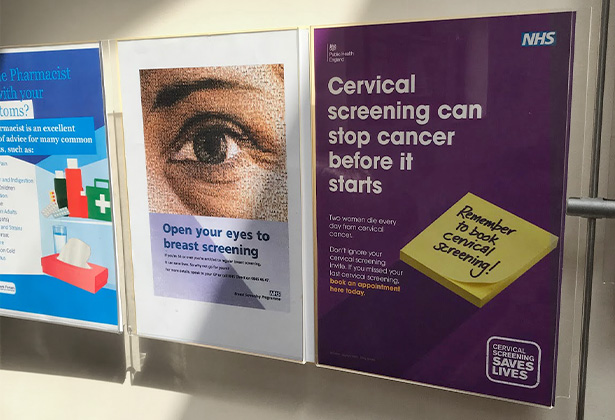
NHSX has been working with Public Health England (PHE), NHS Digital, NHS England and the Department of Health and Social Care to understand the challenges patients and health professionals experience delivering NHS national screening services.
You may have seen news stories about errors which meant people weren’t invited to their breast or cervical screening appointment, or updated on their results. This means that fewer people had their cancer spotted early. These incidents happened because the process of inviting people to screening is often complex and manual and therefore open to human error.
The first service we will focus on is cervical screening, as there are many opportunities to improve. We’ll use service design methods to look at the service beyond just the technology. For example, we want to understand the back-end processes involved with inviting people to screening and how data collected in a GP surgery affects someone processing a sample in a lab.
We’re currently partnering with NHS Digital and PHE to run a discovery to understand the needs and context of people who take samples and analyse samples, and the people who attend screening. We are carrying out user research in GP practices, sexual health clinics, cytology labs and face to face with patients.
We’re mapping the service end to end - starting with how people are selected for a screening invitation, through to how a user moves into cancer care. This is a complex service, it has various online and offline stages delivered by different parts of the NHS and private organisations. We’re making sure we map and understand the background processes.
For example, we met practice nurses who label samples to be sent to a lab. They have to print a form for each patient and hand write the patient’s name and addresses to stick on each sample pot. One of the nurses’ concerns is that they would make an error. Next we’ll visit labs to understand how that process affects their job.
We’ve also observed that practice nurses have to enter the same user and clinical information in two different digital systems while the patient is in the room. The average appointment time is 15 minutes. We know that many nurses would like to use this time to speak to patients about other things, such as contraception or sexual health.
In addition, we’ll be speaking to people who have attended screening or people who are eligible but haven’t attended. We will make sure we include people who are statistically less likely to attend, such as people with a physical disability or from ethnic minority groups, to understand how we can make the service work for everyone.
We’ll post another update once we’ve completed our research and we’re ready to look at how to meet the needs we’ve found. We’re anticipating that the discovery will uncover more opportunities than we can cover in one alpha, so we’ll also provide updates about anything new we find.
If you’d like to be involved with our research please contact DigitalResearch@nhsx.nhs.uk
Leave a comment